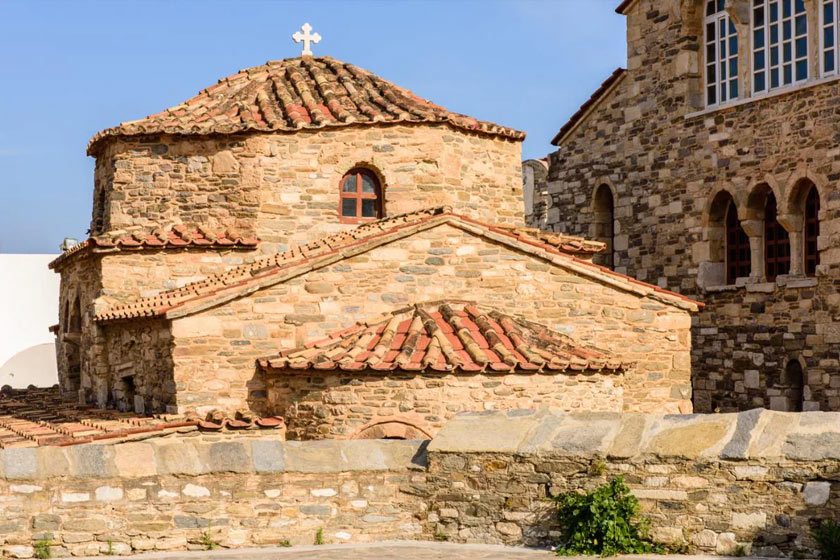
Paros Through history
Behind all the summer islands from all over Greece, the visitors will find exotic spots with sandy or rocky beaches, tourist resorts, hotels and beach bars. A hidden paradise is at the small traditional villages that all the visitors have to meet. An island must provide first of all the traditional side of it and the villager’s culture because the culture is the best way for the travelers to explore every place they visit.
6800 - 3200 BC • Stone age
Indeed, even since the ninth thousand years BC route in the Aegean was at that point broad, yet just in the Neolithic age (6800 - 3200 BC) were the Aegean islands possessed in an efficient manner. The main hints of public activity in Paros were found on the Saliangos islet, among Paros and Antiparos, where perhaps the most seasoned settlement in the pre-memorable Aegean was laid out (fifth - fourth thousand years BC).
3200 - 1100 BC • Bronze age
During the bronze age (3200 - 1100 BC) three incredible human advancements arise in the Greek world : the Cycladic (3200 - 2000 BC), the Minoan (2000 - 1500 BC) and the Mycenaean (1600 - 1100 BC). Remainders of a proto-Cycladic settlement were found on the slope of Kastro (Paroikia), and critical settlements dating to a similar period were additionally found in different puts on Paros (Kambos, Drios, Koukounaries, Plastiras, Glyfa, Farangas). During the Minoan strength in the Aegean Paros turned into a significant military and business focus of the Minoan state and was colonized by Cretans. As indicated by the fantasy, Alkaios, the head of the Cretan homesteaders, assembled the main city on the site of present-day Paroikia, providing it with the privileged name of Minoa (great city). Following the decay of Minoan Crete, another power, the Mycenaean, arises in central area Greece. Leftovers of the Mycenaean human advancement in Paros were found on the Koukounaries slope, close to Naoussa, and on the slope of Kastro in Paroikia.
1100 - 700 BC • Geometrical age
At the turn of the thousand years a gathering of Arcadians, under their chief Paros, lay out their own settlements on the island and name it after him. A little later new pilgrims show up, the Ionians. Paros creates in to an extraordinary sea power. Marble exchanging is a critical wellspring of success for the island, as is additionally farming and cows raising.
700 - 480 BC • Archaic age
In 680 BC Parians colonize the island of Thassos and take advantage of the gold dregs of the Thracian coasts. Design is on the ascent in Paros and well known studios show up. In the seventh century there is a critical lift in verse, essentially addressed by the verse artist Archilochus who is contrasted with Homer. Simultaneously in the East another power arises, the Persians.
480 - 323 BC • Classic age
The oligarchic administration of Paros invites the Persians on the island and an enormous piece of its military follows the Persian armada in their undertakings against Greece. Following the Persians rout (480 BC), the Athenian armada under Themistocles sails to the island and obliges Paros to join the Athenian Confederacy. It is during this time that the renowned Parian artists, Agorakritus and Skopas, both conceived and working in Paros, make their wonderful works. The city of Paros (on the site of present-day Paroikia) has 50,000 occupants, wonderful structures and sanctuaries, a theater and an arena. Toward the finish of the exemplary age Paros turns into a partner of the Macedonians up to the passing of Alexander the Great.
323 - 167 BC • Hellenistic age
The period between the demise of Alexander the Great and the loss of his replacements by the Romans is a period of contentions and general reshuffling with new powers fighting sway over the Cyclades. Paros stayed subject to the authority of the Ptolemies for quite a while.
167 BC - 330 • Roman period
Paros and the remainder of the Cyclades, along with a huge piece of central area Greece, are a territory of the roman domain. Advancement is slowed down and the island is utilized as an extradition area.
330 - 1204 • Byzantine period
The Christian confidence was acquainted with Paros in the fourth century, as it comes to pass from the leftovers of paleochristian chapels and landmarks. It was during this time that the main church of Panagia Ekatontapyliani was worked, by request of Agia Eleni. From the tenth century onwards Paros winds up at the focal point of privateer attacks bringing about broad pulverization.
1204 - 1537 • Venetian occupation
Paros is remembered for the Ducat of the Aegean (1207) and comes progressively subject to the authority of different Venetians families. The occupants of the island work in the fields as vassals without any responsibility for land, while simultaneously they keep on being hassled by privateer attacks and stealing. Naoussa becomes privateer base camp. The palaces of Paroikia, Naoussa and Kefalos (Marpissa) are worked during this period.
1537 - 1821 • Ottoman occupation
The section of the Venetian control of Paros closes with the control of the island by the remarkable privateer Barbarossa (1537) and the following complete annihilation. The crushed island is presently vanquished by the Turks (1560). During the Russian-Turkish conflicts (1770 - 1777) the Russian armada involves the place of refuge of Naoussa as its base to control the Aegean.
